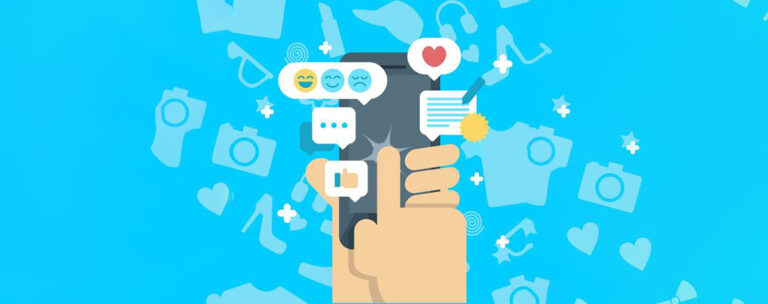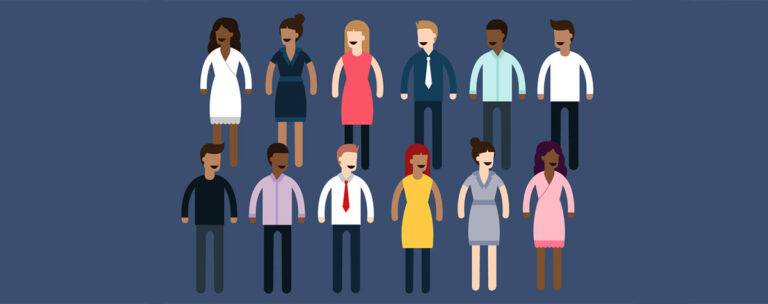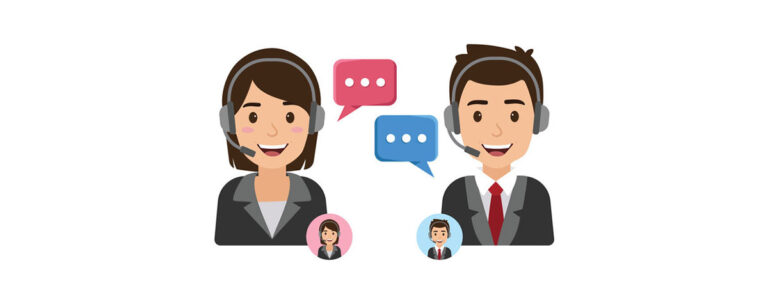
This is a given. Having emotionally intelligent employees will help any organization dive into the great divide of providing a spectacular customer experience, at any given point in time. Are you aware that 90% of top performers in various businesses have ‘Emotional Intelligence’ in common? Their levels of self-awareness and self-management get them ahead and may even outrank their colleagues who have elevated levels of IQ – because IQ is simply not enough – when trying to satisfy your end customers. Now you must wonder what ‘Emotional Intelligence’ really is. It is simply the ability for an individual to recognize their own emotion alongside other people’s emotions, distinguish between different feelings and label them correctly, use emotional information to guide their thinking and behavior, and manage and/or adjust emotions to adapt to environments or achieve their goals. In the business world, high EQ levels in leaders will certainly foster stronger emotional connections with employees. But, do keep in mind that it’s also important to encourage your employees to utilize an EQ approach in their day-to-day responsibilities, especially, in terms of nurturing meaningful customer experiences to increase brand loyalty and to increase your customer base – because you can never get enough of an increasing, loyal army of followers. Emotional Intelligence is for Everyone EQ is for everyone – starting from your front-line managers to your front-line executives. There is no difference there. If you look at your front-line customer executives, they have to deal with various customers who are indifferent, hostile and simply difficult and it can be a nightmare for them. And it is obvious that situations of this nature can wear out these executives down, reduce a positive attitude towards their work and result in low levels of employee engagement. You wouldn’t want that, now would you? When […]

Do you remember the good old days when you were bossed around by your parents, teachers and even siblings who think they are know-it-alls? As kids growing up, we had all sorts of rules and regulations, right? Do your homework, be at the dinner table when you are told, don’t eat too much of chocolates, do your chores…the list goes on. Similarly, we have guidelines at our workplaces (advanced versions obviously). Guidelines such as getting to meetings on time, making sure we meet our work deadlines and so on. As your good, mediocre or bad working days go by, I am sure you wonder if you can have a better say in things that happen at the workplace. Are you able to voice out (or even croak) how you really feel about a certain situation? Are you entitled to make decisions that could possibly influence your job or work environment? Or, do you just hold back and keep your opinions to yourself? As an employee, most of us want to be heard (for obvious reasons). I certainly do. I want my employer to hear me out when I come up with a solution to an existing problem or figure out an improvised technique to finish up a task at hand. I want to be able to tell my manager how I feel about something – good or bad – and not be judged for it. Sadly, this isn’t a reality for some of us. Because, for some of us, our voices are restrained – and we are forced to keep our mouths shut and simply go with the flow (sigh). If you encourage a culture that enforces this, your employees will take 10 steps behind, never feel comfortable about voicing how they feel, and will leave your company behind. I […]

A customer walks into a restaurant chain branch, she orders her usual tuna sandwich as she does every other day. Since she is a frequent visitor, there shouldn’t be any surprises during this specific experience. But there is a difference, she is in a restaurant branch which she hasn’t visited before. She receives her sandwich and settles down in one of the booths. Her first bite is the decision maker. Immediately her taste buds tell her that something is not right. The bread is stale, the filling is all wrong. She’s pissed. Naturally, the initial reaction is to complain – so she turns to Social Media. Two days later, the CEO (Chief Executive Officer) of the restaurant chain in question gets a call from his wife who tells him about a Facebook post which went viral (over 500 shares) and has now reached news publications as well. The restaurant chain’s brand image is compromised. Any strategic move by the CEO and his company will cause the PR situation to worsen – more fuel to the fire. “If only I could have known that she was unhappy two days ago, I could have apologized and made amends,” says the CEO. Let’s look at this situation with the introduction of Emojot. The customer is unhappy. She sees a card on the table where she is sitting saying “Tell us how you feel”. She’s intrigued and visits the link. With the ability to immediately express how she feels – her negative sentiments are received through the restaurant’s Emotion Sensor®. Immediately, the CEO and the CXO (Chief Experience Officer) of the restaurant chain are alerted via WhatsApp and Email – they view the analytics on the cloud-based dashboard and acknowledges: the problem with the quality of the sandwich (as the customer has given open […]

When you look at the world around, there are so many things that take place daily – be it discoveries, progressive technologies, natural disasters or merely an activity that can have a negative or positive impact in our lives. I can certainly relate to it. I recently left my phone behind in a taxi I took a ride in. Luckily, because it uses a tracking mechanism that has details of the trip, the driver and what not, I was able to connect with him to get my phone back (phew!). Progressive technologies have helped us take 10 steps ahead and made our lives easier because we are able to voice out our feelings (opinions/problems/solutions) instantly. In the good old days, do you recall the times that you possibly watched a horrific (or terrific) news segment and felt something about it? Sadly, this perception or feeling you had could only be shared with the people you hung out with, at that point in time. Now, times have changed and we have social media to witness a silver lining. With a digitally empowered world revolving around social media as one key aspect, it has changed the way we voice out how we feel individually or collectively. Obviously, it’s not as rosy as it seems. Like everything else, digitally empowered obviously has its pros and cons. But, if you consider the good that can come out of it, I think you’d be a pretty good state none the less. And, even if we aren’t we can always improve things along the way. Like everything else, digitally empowered obviously has its pros and cons. But, if you consider the good that can come out of it, I think you’d be a pretty good state none the less. And, even if we aren’t we can […]

The concept of understanding that employee engagement is the key to drive productivity, reduce employee turnover and boost innovation is arguably one of the critical challenges most organizations face today. A study conducted by MSW Research and Dale Carnegie Training explored key drivers of employee engagement out of which they found out that only 29% of employees are fully engaged while 26% employees remain disengaged. In addition, the study discovered that there are three key drivers that affect employee engagement amidst other factors. 1. Relationship with Supervisor/Manager: As you might be familiar with the statement, ‘People don’t leave jobs, they leave their managers’. And, it is indeed a true saying. Something I can relate to myself. People grow wiser as their working years roll by. The study revealed that a “caring” manager is one of the key elements that drive employee engagement. Employees want a manager who will nurture a good relationship, get to know them, care about their personal lives and support their health and well-being. If a manager can build strong relationships with employees, create the right foundation for dedicated team interaction and lead in a human-centric manner – it creates an engaging environment where employees feel special and can perform at the highest level possible. 2. Belief in Leadership Practice what you preach: Leaders set the tone and define goals for the organization. These behaviors and goals need to be clearly defined, realistic for employees to achieve and communicated throughout the organization. This will create a sense of shared sense of responsibility for the organization’s success. Value who work by you and work for you: If you cannot appreciate what your employees do for you, and value their work for the organization, it’s one of the biggest mistakes you can make as a leader. According to the […]

If you’re an event planner, an event organizer, a publisher, or simply a person handling an audience it is very important that you understand the importance of listening to what your audience has to say. Listening and understanding your audience’s voice lets you plan for the future. This could not only save you a lot of money but it will also help you cater to your audience in a much more optimized manner. The possibilities of growth are endless when you start caring for your audience. A happy, engaged, strong audience 😊 The more you listen to your audience, the more the audience would love to respond and keep engaging with your programs. This will in return reward you with a very powerful audience who is happy all the time. They do not have any problems to do with you or your program at all. A happy audience also easily translates to a higher revenue. We’ll leave that for now but will definitely be picking it up on this article. You get the opportunity to improve 🔺 Once you know how your audience is feeling and what their thought process is, you will be able to tweak things on your end in order to come up with better content or upgrades for your event in the future. The audience will know that their voice is being heard and would love to keep engaging with whatever it is that you come up with in the future. Everybody gets the chance to speak up 📢 The fact that everyone gets a chance to engage in a conversation is very powerful. When there is an additional layer on top of you and your audience where everyone gets the chance to collaborate and share their views especially in the case of a conference makes […]

Founder of the Virgin family of corporations, Sir Richard Branson has been quoted as saying, “The best way to take care of your customers is to take care of the employees who take care of your customers.” As per Branson happy employees will result in good customer service, this will help companies thrive in business. Employee retention and training is a key part of successful business. Low employee retention will result in loss of corporate memory, cost in training a new employee and reducing work efficiency. Training a new employee will cost three times as much as retaining an employee. That is why it is so important to understand the “Voice of the Employee” (VoE). VoE Program is? A VoE program is designed to increase employee engagement and identify the areas to improve. Also, this will help you identify root causes for existing issues that matter to your employees and possible solution for the problems. Collection of information like this makes it easier to increase employee engagement, develop better performance reward programs, identify areas to improve, reduce attrition and gage overall satisfaction of the employees. As per the latest studies, benefiting employees in their daily life is the key, which means that the employees care more about the benefits that they see on a daily basis and the employee voice is been heard over their size their paycheck. Benefits of a VoE Program? Higher retention rates Lower development cost Feeling appreciated Feeling understood Happy and engaged staff Higher employee morale and fewer complaints Higher ROI How to Start a Voice of the Employee System 1. Start at the Top The value of the employee engagement program should be understood by the CXO level, especially the chief people officer of the organization. This would be the primary step towards implementing a […]







